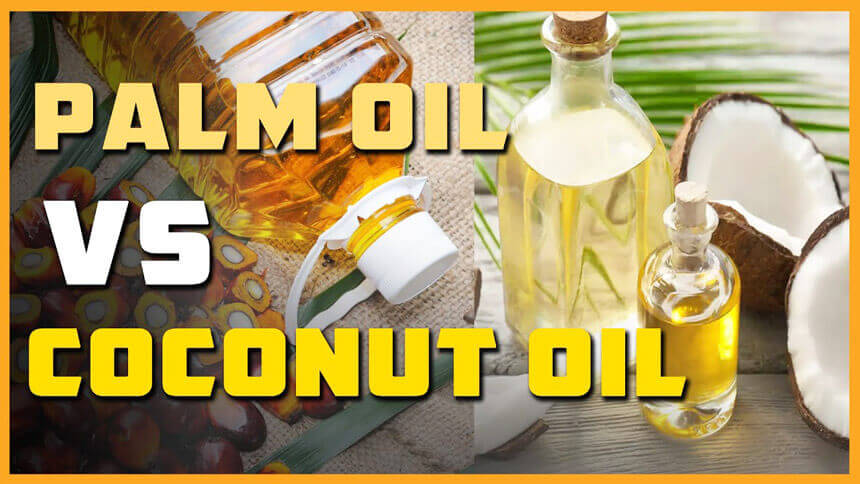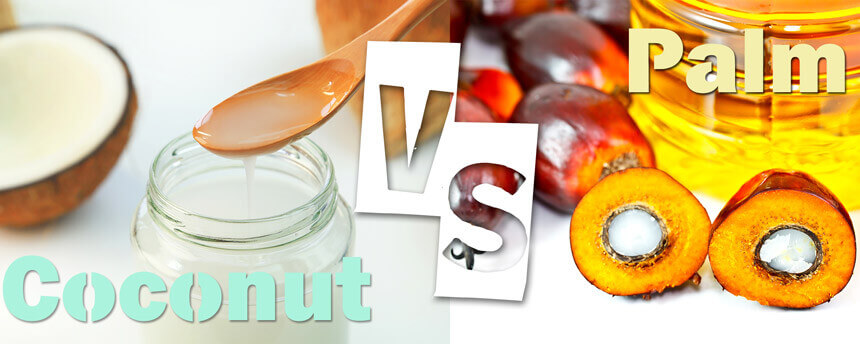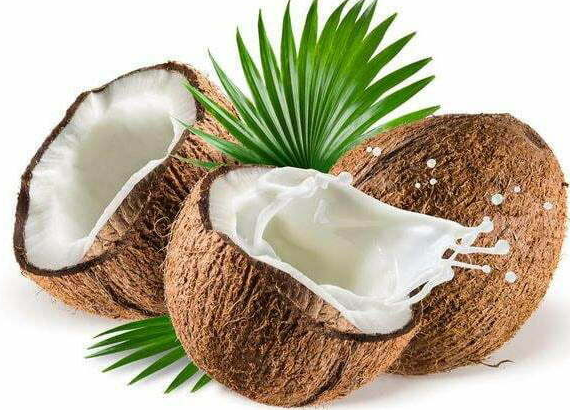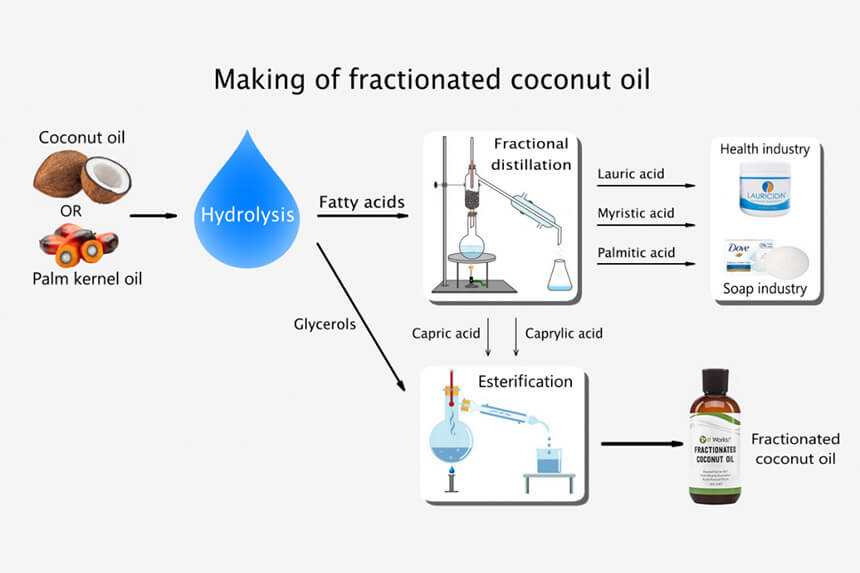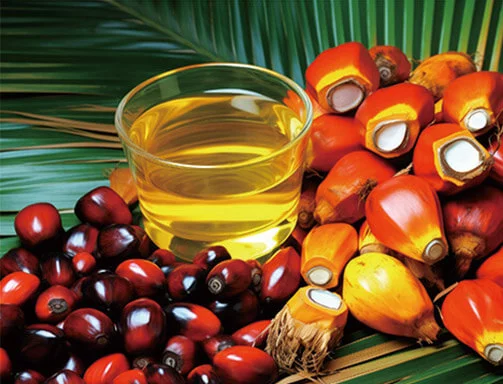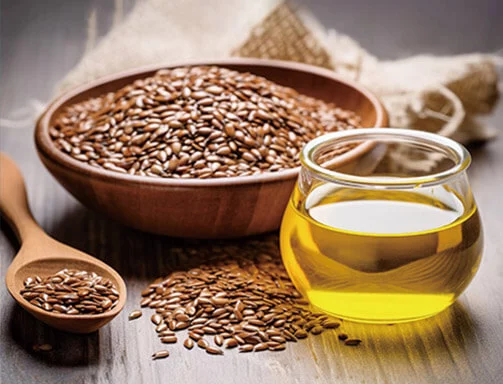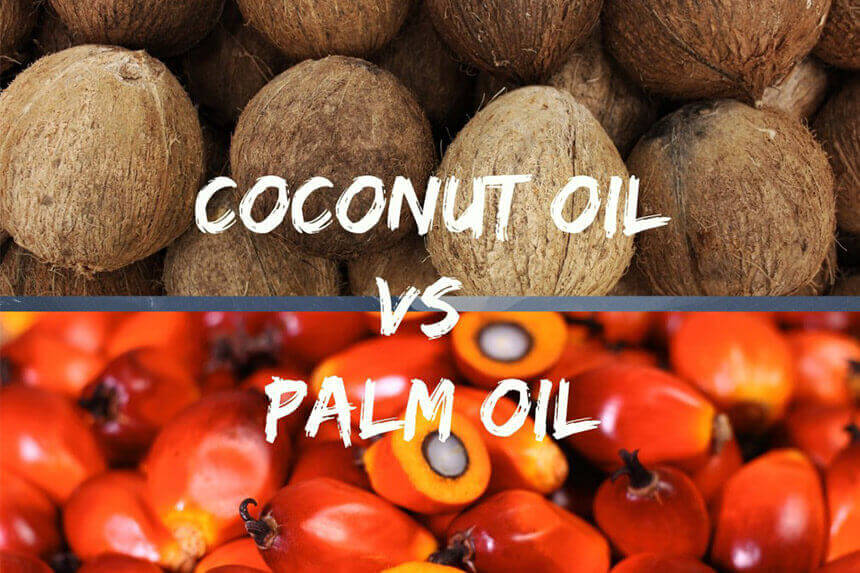
Introduction
In the global oils market, palm oil and coconut oil are two most widely used vegetable oils. Palm oil comes from fruit of oil palm tree (Elaeis guineensis), coconut oil is extracted from meat of mature coconuts. Both oils have unique properties, making them versatile for cooking, hair care, skincare, and more.
This article provides detailed comparison palm oil vs coconut oil, to help you decide which is better for your needs.
Palm Oil Vs Coconut Oil Production Process
Palm oil is extracted from fruit of oil palm tree, primarily grown in Indonesia, Malaysia, and Philippines, etc. The production process is highly industrialized,
- Harvesting: Hand-picked or mechanically harvested mature palm fruits.
- Sterilization: Steam fruits prevent oil degradation and kill bacteria.
- Threshing: Separate fruits from the bunch.
- Digestion: Mash fruits to release oil.
- Pressing: Mechanical presses extract crude palm oil.
- Clarification: Purifing crude oil to remove impurities.
- Refining: By degumming, neutralization, bleaching, and deodorization produce refined palm oil, often used in processed foods and cosmetics. (Related Post: palm oil refining plant >>)
Coconut oil derived from mature coconut kernels, main production in Philippines. Its production process into heat press and cold press:
Heat-Pressed Methods:
- Centrifuge: Mix Copra with water and centrifuge separate oil.
- Heated Expeller: Press Copra under heat to extract oil.
- Solvent Extraction: Solvents extract oil from copra, often for refined coconut oil.
Cold-Pressed Methods:
Expeller Cold-Press: Press fresh coconut meat without heat, preserve nutrients.
Palm oil production process often involves refining, may reduce nutritional content. Coconut oil, especially cold-pressed, retains more natural nutrients and flavor, popular for health-conscious consumers.
![Palm oil vs coconut oil production process]()
Palm Oil Vs Coconut Oil Physical Properties
| Property |
Palm Oil |
Coconut Oil |
| Appearance |
Crude palm oil reddish-orange, refined palm oil colorless. |
White or pale yellow when solid, clear when liquid. |
| Room Temperature State |
Semi-solid, melting 34-36°C. |
Solid, melting 24-25°C. |
| Smoke Point |
High at 232°C |
Unrefined coconut oil 176°C, refined 204°C. |
| Flavor |
Crude palm oil has nutty, earthy taste; Refined is neutral. |
Unrefined coconut oil has distinct coconut taste; Refined is neutral. |
Palm Oil Vs Coconut Oil Chemical Properties
| Property |
Palm Oil |
Coconut Oil |
| Fatty Acid Composition |
50% saturated fats (mainly palmitic acid), 40% monounsaturated fats (oleic acid), 10% polyunsaturated fats. |
90% saturated fats, with 50% lauric acid, 8% caprylic acid, 7% capric acid, and others. |
| Vitamins |
Rich in vitamin E and vitamin A. |
Low in vitamins; contains small amounts vitamin E and K. |
| Other Compounds |
Contains phytosterols, squalene, and coenzyme Q10. |
High in medium-chain triglycerides (MCTs). |
The balanced fatty acid profile in palm oil vs coconut oil makes it more versatile for various applications.
![Palm fruit oil vs coconut oil]()
Palm Oil Vs Coconut Oil for Hair
Palm Oil for Hair
- Moisturizing: Protect hair from free radical damage and moisturizes it.
- Strengthening: Essential fatty acids strengthen hair follicles, reduce breakage and scalp inflammation.
- Vitamin A Source: Promotes sebum production for scalp health and hair growth.
- Natural Conditioner: Add shine and softness, ideal for dry or damaged hair.
Coconut Oil for Hair
- Deep Penetration: Lauric acid allows coconut oil to penetrate hair shaft, reduce protein loss, and strengthen hair.
- Moisturizing: Lock moisture, reduce frizz, and add shine.
- Scalp Health: Antimicrobial properties help treat dandruff and scalp infections.
- Versatile Use: Ideal for hair masks, pre-shampoo treatments, and hot oil applications.
![Palm oil vs coconut oil for skin]()
Palm Oil Vs Coconut Oil for Skin
Both palm oil and coconut oil moisturize effectively, but coconut oil’s occlusive nature makes it for very dry skin. Palm oil’s antioxidant content offer superior anti-aging benefits.
Coconut oil’s antimicrobial properties are better for treating skin conditions like acne or infections.
Your choice depend you prioritize hydration or antioxidant protection.
![Coconut oil vs palm oil for cooking]()
Palm Oil Vs Coconut Oil for Cooking
Palm oil vs coconut oil for cooking hinges on smoke points and flavor. Refined palm oil has a high smoke point, suit frying and industrial food processing. Unrefined coconut oil smokes lower, better suit bake.
For flavor, coconut oil add subtle sweetness to dishes, palm oil is neutral. In tropical cuisines, coconut oil is irreplaceable in curries and desserts.
Palm Oil Vs Coconut Oil Health Benefits
Palm Oil Health Benefits
- Antioxidants: Vitamin E may lower cholesterol and support heart health.
- Eye and Immune Health: Vitamin A support vision and immunity.
- Brain Health: Tocotrienols may reduce cognitive decline and support brain function.
Coconut Oil Health Benefits
- Quick Energy: MCTs rapidly metabolized, aiding weight loss.
- Immune Support: Lauric acid has antimicrobial properties, boosts immunity.
- Heart Health: May increase HDL cholesterol and reduce LDL when used moderately.
![Palm oil vs coconut oil price]()
Palm Oil Vs Coconut Oil Price
Coconut oil and palm oil price fluctuates based yield and demand.
Palm oil is cheaper ($800–$1,200/ton) because higher yield (4–8 tons/hectare). Coconut oil ($1,500–$2,000/ton) costs more because lower yield (2–3 tons/hectare) and labor-intensive harvesting.
Conclusion
Choosing between palm oil and coconut oil depends on application. Palm oil has high-heat stability, is staple for processed foods and biofuels. Coconut oil with skin-friendly MCTs and antimicrobial properties, dominates natural cosmetics and health-focused diets.
Whether you want to invest palm oil extraction machines or coconut oil processing machines, Henan Huatai Intelligent Equipment Group can provide you with professional solutions. We have palm oil processing plants and coconut oil extraction projects in Nigeria, Indonesia, Peru, Bangladesh, and other countries. Welcome to consult us anytime!
References:
![]() Service Coverage
Service Coverage
![]() FAQ
FAQ



